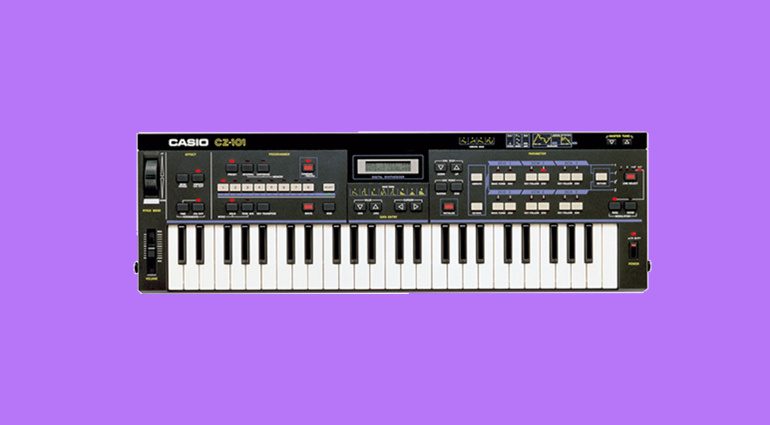There are many people who, for one reason or another, rely heavily on mobile data. Whether they’re out most of the time, don’t have a Wi-Fi connection available, or travel a lot, their carrier’s plans help them to stay connected. However, not all carriers offer unlimited data plans or have “fine print” that limits your usage. Therefore, you must be aware of the mobile data used by your favorite apps.
Today, the most popular apps are multimedia-based. Of course, we’re talking about social media, which allows you to share special moments and stay in touch with your loved ones. We also can’t forget streaming apps, both music and video, which are essential for your free time. These apps, by nature, are “devourers” of your mobile data plans. Even web browsing and travel apps are among the hungriest ones.
If you’ve ever wondered if any of your favorite apps are among those that use the most mobile data, you’ll probably find the answer throughout this article. A recent study by the Holafly team yielded some pretty revealing results. You might even get a few surprises, as well as useful tips to help you save on your precious data plan.
YouTube is the video app most hungry for mobile data
If you want to watch videos, it’s quite likely that YouTube is the first name that comes to mind. That’s normal since we’re talking about the world’s leading platform for this type of content. Over the years, YouTube has gained many more features, and its UI has become more dynamic. This not only results in a heavier mobile app but also higher data usage without you even realizing it.
With that in mind, you won’t be surprised to learn that YouTube is the video-focused app that’s hungriest on your mobile data. The study showed a use of around 193 MB every five minutes. That’s almost 30% more data than Disney+, the second on the list, which uses about 150 MB every five minutes. The gap is much larger with Amazon Prime Video, the third on the list, which uses “only” 97 MB of data every five minutes.
Still, you could say that YouTube is “cheating.” Its default settings are fairly data-intensive due to features like videos that autoplay in your feed as soon as you open the app. Plus, it will always try to set the maximum video resolution allowed by your internet connection speed.
How to save some valuable mobile data on YouTube
Fortunately, the mobile app comes with options to help you reduce data consumption. One of the most obvious is to disable video autoplay in your feed. You can find the option in Settings > General > Playback in feeds. In settings, you’ll also see “Data saving,” a set of options designed to… well, save mobile data.
From “Data Saving,” you can set things like reducing video quality, disabling video playback in feeds only while using mobile data, and even a data usage reminder. YouTube also allows you to tweak the video resolution while playing a video, a pretty useful option for what we’re looking for.
If you’re a regular Netflix user, you’ll be pleased to know that the app is among the least data-hungry of its kind. Netflix uses 53 MB per five minutes, second only to Apple TV, which uses 44 MB. As a bonus, Spotify, the music streaming service, barely reaches 7 MB of data usage every five minutes.
Snapchat is the king of mobile data use among social apps
We’ll consider “social” not only social media apps but also messaging apps. Do you love using Snapchat on a daily basis? Would it change your perspective to know that it’s the most data-hungry social app? The study found that Snapchat uses more mobile data than other messaging apps, and even more than social apps like Instagram and Facebook!
Snapchat takes up about 101 MB of your data every five minutes of use. In comparison, Threads (2nd place) and Pinterest (3rd place) use 85 MB and 82 MB during the same period, respectively. You’d expect apps like Facebook and Instagram to be at least in the top 5 most data-hungry social apps. However, surprisingly, they don’t even crack the top. Instagram (6th place) and Facebook (7th place) use about 69 and 65 MB every five minutes, respectively.

Facebook and Instagram, surprisingly out of the top 5
The “social” app that uses the least data is LinkedIn, with just 23 MB every five minutes. Okay, this might be considered cheating, as LinkedIn is primarily a professional platform, and its usage differs significantly from that of Instagram. Reddit, which ranks 9th among the top 10 data-consuming social apps, does not cater to the same user experience as Facebook. However, X (FKA Twitter), an app more comparable to Meta’s services, takes only about 50 MB of mobile data every five minutes.
Back to Snapchat, there are reasons behind its high mobile data demands. As soon as you log in, the app downloads both new content and Lenses from your favorite contacts. This enables faster access to the cached content. However, it is inconvenient if you have a data plan with limited usage. Fortunately, you can find a “Data Saver” mode in the app’s settings. In fact, most social apps offer similar modes, so if you use one on the list, you should explore its Settings menu for a bit.
AllTrails surpasses Google Maps in data use for travel apps
Apps that make your life easier when traveling are the order of the day. Our mobile devices have replaced the classic (and huge) physical maps of yesterday, adding many advantages along the way. We will consider as “travel apps” all those that make it easier for you to get around or move without problems in unknown locations. That is, apps like Uber, Google Maps, hiking, hotel reservations, and even languages share the section equally.
Speaking of hiking apps, you might be surprised to learn about the one that consumes the most data in this section. It is AllTrails, an app that takes about 155 MB of your mobile data every five minutes of use. AllTrails is a favorite app for hikers, offering over 420,000 trails with reviews, tips, and even an AI-powered bot for extra assistance. However, like Google Maps, AllTrails allows you to download maps for offline use. So, you can use this option to download maps for the trails you’ll need over a Wi-Fi network before you set out.

Google Maps data usage appears to be really well optimized
In this segment, Google has done a good job with its Maps service. Although the app has received more and more options and features, it ranks 5th among the most data-hungry travel apps, using 87 MB every five minutes. However, Waze, another Google-owned navigation service, ranks 2nd with 100 MB every five minutes. Waze’s existence may have helped Maps become a lighter app. After all, Google can integrate additional navigation features into Waze.
The Hotels.com app, a hotel booking service, takes third place in the segment with 104 MB of mobile data per five minutes. It’s intriguing that the Hotels.com app is so mobile data-hungry when other similar apps on the list, such as Trivago, consume only 34 MB every five minutes. However, the design of each app significantly impacts its data consumption. For example, some apps keep downloaded content in cache longer, at the cost of taking up more space on your internal storage.
The design differences between similar apps also become evident when comparing Uber and Bolt, two ride-sharing services. Uber takes about 120 MB of mobile data for every five minutes of use, while Bolt takes only about 47 MB during the same time. The least mobile data hungry app for travelers is Google Translate, using a paltry 3 MB every five minutes.
Apple’s Safari is the least data plan-friendly mobile browser
The web browser segment is quite competitive, both on PCs and smartphones. Most users tend to rely on pre-installed browsers, but many still download their favorite alternative browser as soon as they change phones. You won’t be surprised to learn that Opera is the least data-hungry mobile browser, given its development approach from the very beginning. Opera is a legendary browser that has existed even since the pre-smartphone era. The app consumes just 16 MB for every five minutes of use.

If you’re an Apple device user, there’s bad news for you. The research determined that Safari is the mobile browser that consumes the most mobile data in its segment, using about 56 MB every five minutes. That’s quite a bit more than Vivaldi, which came in second on the list at 33 MB per five minutes of use. The big surprise may be Chrome, which doesn’t make the top five despite its reputation for being resource-hungry. Google’s mobile browser takes about 24 MB per five minutes of use, second only to Opera.
Some tips to help you avoid unexpected data charges
Now that you’re aware of how much mobile app usage some of the most popular apps take up, you probably want to know what you can do about it. We’ve already offered some tips throughout the article, but now we’ll compile the most effective ones in a summary below, as well as include some new ones.
For travel, it’s a good idea to use an eSIM-compatible smartphone and pay for an international data plan from the many available out there. Remember that roaming adds an extra cost to the usual price you pay. Holafly, the company that conducted the mobile data usage study, offers its own eSIM plans, which you can check out on its website. This way, you can keep total control of your mobile data expenses, avoiding unpleasant surprises on the bill.
For video-based apps, remember to disable HD content playback whenever possible. Most apps of this style allow you to reduce video quality. Only a few, like Max, don’t offer this option, automatically adapting to the speed of your mobile data connection. It’s also advisable to utilize an available WiFi connection to cache your favorite content. These tips also apply to music streaming services, as they usually offer similar data-saving options.
If you’re an Android user, there’s a system-level data-saving option. The feature can be especially useful while traveling or if you rely heavily on mobile data usage in your day-to-day life. Usually the “Data saver” option is available from “Network & Internet” in your phone’s settings. However, the location of the option may vary due to the custom skins of each brand.






